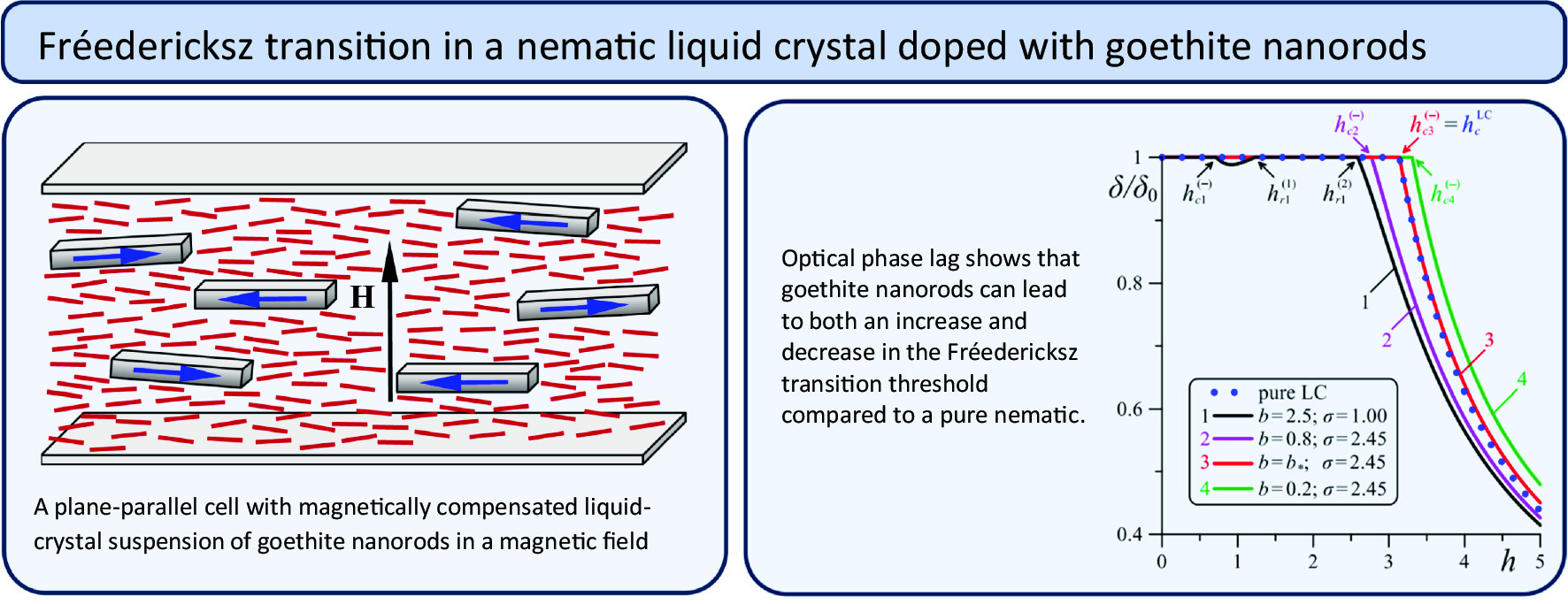https://doi.org/10.1140/epje/s10189-024-00448-1
Regular Article - Soft Matter
Antiferromagnetic liquid-crystal suspensions of goethite nanorods: three mechanisms of magnetic field influence on orientational structure
Perm State University, Bukirev St. 15, 614990, Perm, Russia
Received:
14
December
2023
Accepted:
30
July
2024
Published online:
12
August
2024
The study looks into magnetically induced orientational transitions in suspensions of goethite nanorods based on a nematic liquid crystal. The study considers magnetically compensated suspension, which is a liquid-crystal analogue of an antiferromagnet. Unlike conventional magnetic particles, goethite nanorods have a remanent magnetic moment directed along the long axis of the particle and also they have negative diamagnetic anisotropy. Thus, it can be claimed that liquid-crystal composites of goethite nanorods have three mechanisms of interaction with an external magnetic field. The first two mechanisms are originally quadrupolar and are related to diamagnetic susceptibility anisotropies of liquid-crystal matrix and impurity goethite nanorods. The third mechanism is a dipolar one and is due to a remanent longitudinal magnetic moment of each dispersed particle. The magnetic-field-induced birefringence is used to show that the presence of three competing orientational mechanisms of interaction with an external magnetic field can both increase and decrease the Fréedericksz transition threshold compared to a pure liquid crystal. Diagrams of orientational phases of the suspension were constructed, and cases of various orientational mechanism predominance were analysed. Besides, a representation of the free energy of the suspension near the Fréedericksz transition in the form of the Landau expansion was obtained. This made it possible to establish that the Fréedericksz transition can occur as a phase transition of both the first and second order.
Mathematics Subject Classification: 76A15 / 76T20 / 78A48
Copyright comment Springer Nature or its licensor (e.g. a society or other partner) holds exclusive rights to this article under a publishing agreement with the author(s) or other rightsholder(s); author self-archiving of the accepted manuscript version of this article is solely governed by the terms of such publishing agreement and applicable law.
© The Author(s), under exclusive licence to EDP Sciences, SIF and Springer-Verlag GmbH Germany, part of Springer Nature 2024. Springer Nature or its licensor (e.g. a society or other partner) holds exclusive rights to this article under a publishing agreement with the author(s) or other rightsholder(s); author self-archiving of the accepted manuscript version of this article is solely governed by the terms of such publishing agreement and applicable law.





